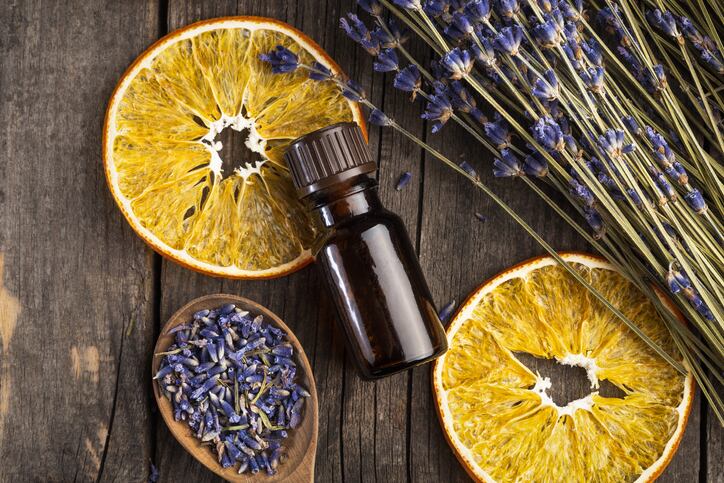Cosmetics researchers around the world study how to meet market demands like protection from pollutants, natural products and sustainability. The results reveal possible paths to new ingredients and products, as well as revised approaches to existing products.
Catch up on recent research on CosmeticsDesign.
Zeolites show potential as an anti-heavy metal cosmetics ingredient

Zeolites, a nanoporous material being tested in various other fields at this time, may absorb heavy metals in a creamy cosmetic and offer potential to formulators seeking to remove such environmental compounds, suggests preliminary data from Italy and Switzerland.
Writing in Cosmetics, Pesando et al. said zeolites are already being tested as a means to absorb toxins and improve outcomes of various medical treatments, and their research was to show the viability of zeolites as a cosmetic ingredient to prevent heavy metal penetration through the skin.
“Toxic metals are defined by many as ‘silent killers’ because they replace the minerals necessary for life in the body, altering biological functions and structures,” Pesando et al said. “Zeolites are currently arousing a lot of interest for their absorption properties, able to trap toxins in the crystalline channels.”
What are zeolites
According to Pesando et al, zeolites are a nanoporous material with a crystalline aluminosilicates structure that can be derived either naturally or synthetically. In less scientific terms, zeolites can act as “molecular sieves,” moderating what molecules could get to the surface of the skin.
Essential oils could have uses across cosmetics, but still pose significant challenges

Consumer and regulatory demands are pushing personal care brands to use more botanical ingredients, pulling essential oils further out of fragrance and demanding more research.
A paper was published in Cosmetics by a research team out of Spain and Argentina, Guzmán et al, which summarized the current body of knowledge on the use of essential oils, and components of essential oils, in cosmetics and beauty products.
Guzmán et al said natural ingredients have been long used in cosmetics, but recent consumer sentiment and international regulations have pushed the 'natural beauty' segment to grow, making up around 10% or $40 billion of the current global market.
Essential oils have long been used in fragrance, as they are high in aromatic compounds, but the research team said their antioxidant, bactericidal, virucidal, fungicidal, antiparasitic, insecticidal and medicinal properties offer broad utility in personal care.
Sandalwood shows promise as blue light, pollution protection ingredient

Sandalwood is already an important fragrance ingredient, but a recent study shows the ingredient might also be able to protect skin against blue light and pollution.
A research team out of Mauritius, Australia and France, Kolanthan et al, recently published their most recent study on the topical application of sandalwood in Cosmetics with an in vivo study on blue light and pollution protection.
Kolanthan et al previously studied sandalwood’s antioxidant and anti-aging qualities in vitro and ex vivo which found sandalwood oil showed promise in protecting skin from both blue light and cigarette smoke.
In this most recent follow-up study, Kolanthan et al said they wanted to measure sandalwood’s real-world blue light and pollution protective potential as demand for these qualities in personal care products increases.
Challenges in formulating natural, organic sunscreen products

Sunscreens are a formulation challenge, especially when it comes to meeting organic and natural consumer demands.
A research team out of Italy and the US, Tortini et al, recently published a narrative review of natural and organic sunscreen formulations in the Cosmetics journal. The paper's goal was to congregate information on natural and organic formulation.
Tortini et al said consumers, particularly those born after 2000, are both interested in sun protection products and the environmental impacts of products.
“The formulation of effective and pleasant sunscreen, having a natural, organic, sustainable connotation, is getting a more and more complex approach for the paucity of suitable ingredients,” Tortini et al said.
Skin to skin: Potential benefits of upcycled mangosteen peel extract, study

Plants around the world offer botanical and upcycled ingredient potential, and a research team out of Malaysia found the peel of mangosteen fruits may hold skincare promise.
The research team, Tan et al, was recently published in Cosmetics exploring the potential of mangosteen peels as a cosmetic ingredient, both because of its skincare properties, upcycling potential and impact on local economies.
Mangosteen is a sweet, juicy fruit cultivated mainly in Southeast Asia, particularly Malaysia. The fruit is often processed into juices, concentrates and dried fruits for consumption, leaving behind waste like peels.
Tan et al used mangosteen peels to create an upcycled, standardized extract with potential anti-aging, antioxidant, anti-wrinkle and pigmentation control effects.
“Natural antioxidants derived from natural sources such as mangosteen peel are preferable to synthetic antioxidants due to the undesirable side effects of synthetic antioxidants,” Tan et al said. “Hence, the objective of this study is to formulate and evaluate novel herbal face creams containing mangosteen peel extract that was standardized.”




